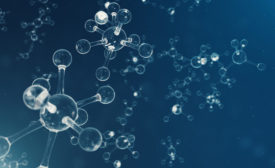Home » research and development
Articles Tagged with ''research and development''
Cornell Chemists Image Basic Blocks of Synthetic Polymers
Scientists have developed a technique that allows the imaging of polymerization catalysis reactions at single-monomer resolution and, through fluorescent signaling, to differentiate monomers from one another.
March 15, 2024
Engineers Design Stronger Tape Through the Art of Cutting
Applying specific paper cutting techniques to adhesive tape made the bond of the tape stronger by a factor of 60 while still allowing for easy removal by peeling in the opposite direction.
February 16, 2024
How AI Is Being Harnessed to Advance the Adhesives and Sealants Industry
Implementing AI in R&D and manufacturing processes opens new possibilities, including enhanced precision, efficiency, customization, and innovation.
January 23, 2024
Using the Power of AI for Adhesive and Sealant Formulation
With a strong foundation of clean and structured data, formulators can utilize artificial intelligence and machine learning to speed up the R&D process.
January 10, 2024
Keep the info flowing with our eNewsletters!
Get the latest industry updates tailored your way.
JOIN TODAY!Copyright ©2024. All Rights Reserved BNP Media.
Design, CMS, Hosting & Web Development :: ePublishing







